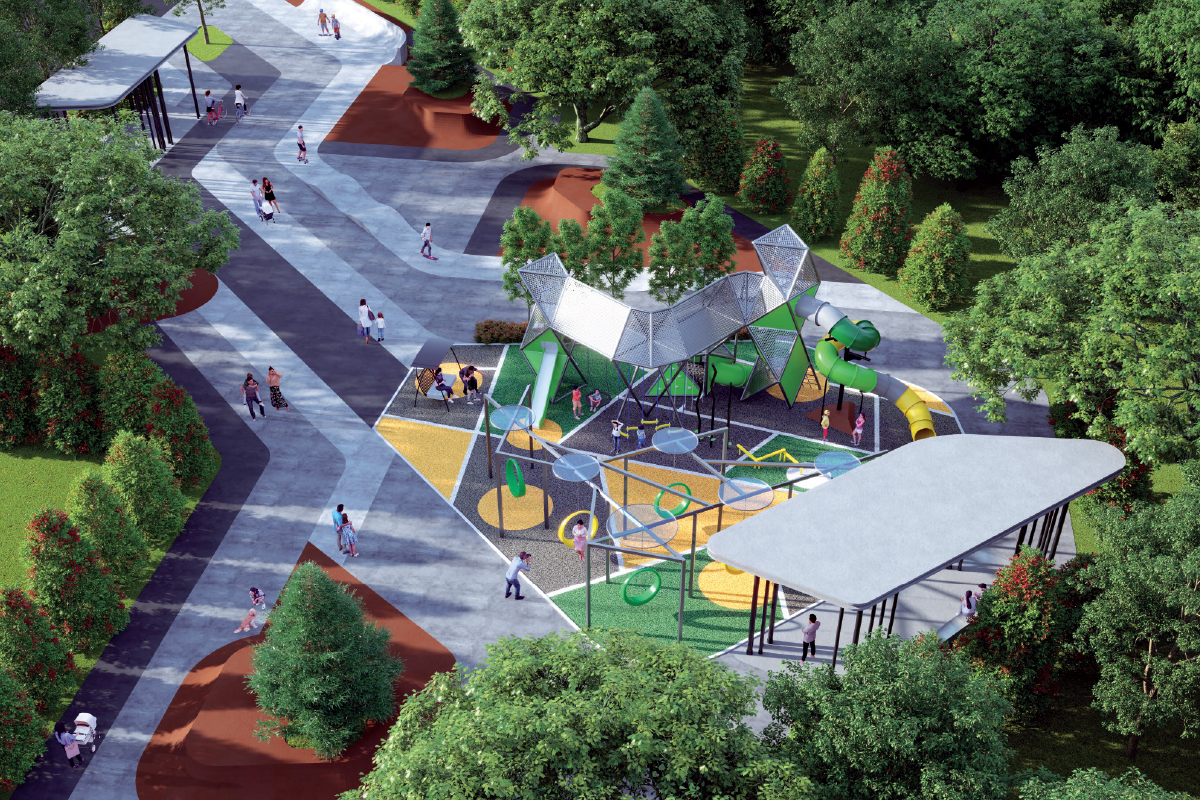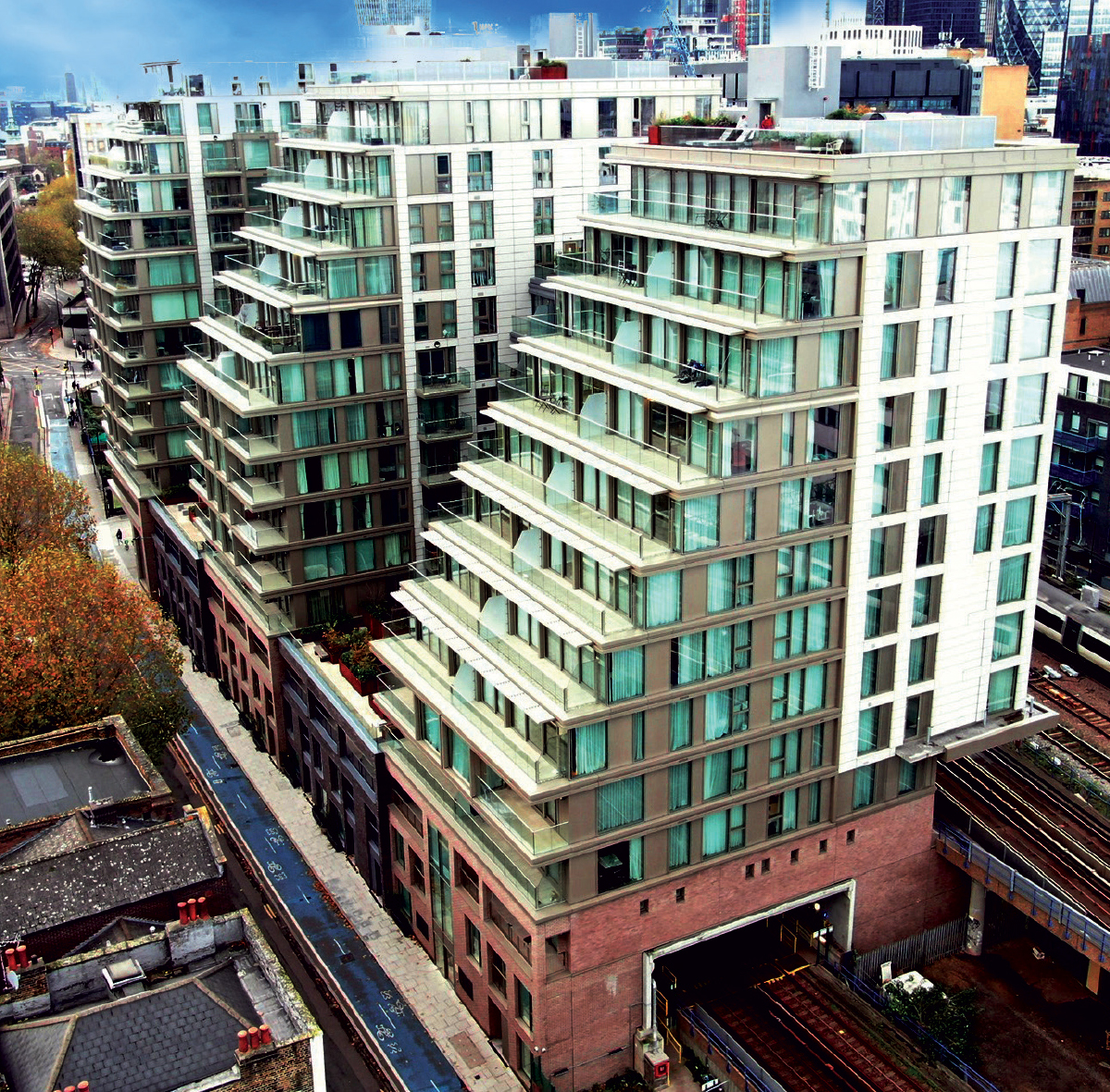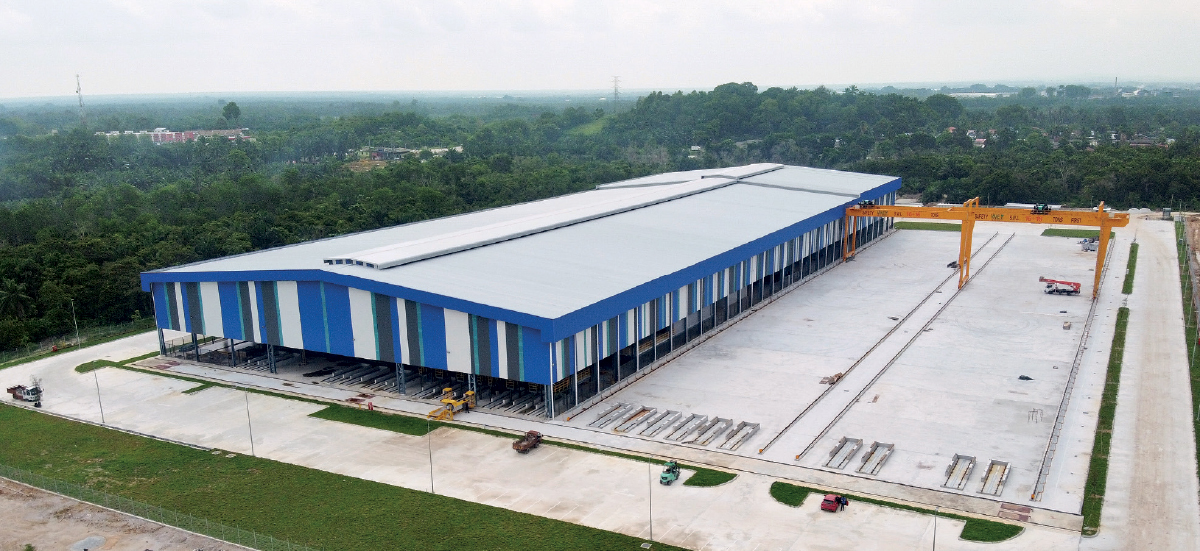
This article first appeared in City & Country, The Edge Malaysia Weekly on December 12, 2022 - December 18, 2022
Always ready with a smile for everyone, IJM Land’s affable Datuk Wong Tuck Wai radiates confidence and energy. We meet at Pantai Sentral Park’s ICE Gallery, where I am greeted with a warm handshake. In this exclusive interview with City & Country, Wong shares what he has been up to since becoming CEO on July 1.
With a wealth of experience in construction and property development under his belt, Wong is no stranger to the property industry. He most recently served as deputy president and chief ope-
rating officer of S P Setia Bhd from 2016 to 2021. During his tenure, he led the development of high-profile properties in all asset classes. He was also chairman of Battersea Power Station Development Company, which played an instrumental role in the £8 billion regeneration of Battersea Power Station in London, the UK.
Having retired in September last year, for a while, Wong enjoyed his days playing golf and watching TV. However, he began to feel restless and the itch to get back in the game became stronger. “There is only so much TV you can watch, only so many books you can read, and certainly only so much you can eat,” he chuckles.
“Then [the offer from IJM Land] came at the beginning of 2022. They asked me to consider joining them and to share my 45-year experience in the construction and property development industries to guide IJM Land. I gave it some thought and decided that I was still energetic [enough to do it],” he recalls. “I wanted to do a responsible job and not just come in and get the remuneration, but to contribute in a meaningful way on the journey with IJM Land.”
Wong relates that the transition to working at IJM Land was smooth as the developer was a listed company before it went private in 2014, and thus has the “ethos of a public company”, which he is accustomed to.
“When I came in, it was just a matter of scale, albeit with some differences. Setia has more than 2,000 employees, IJM has 570. But it doesn’t mean you don’t roll out the same systems and processes, the same governance issues, the same SOPs [standard operating procedures]” he says.
For immediate action
When Wong came on board, he saw three things he needed to address immediately: brand equity, systems and processes, and increasing sales.
“The first was to assess the brand equity of IJM Land — how far and wide is the brand’s reach in the market? Certainly, IJM Land is renowned, but it could do with more [recognition]. I think we were still flying a little bit under the radar in terms of brand recognition in the first instance or even brand recall. I thought there was a bit of a gap and I needed to strengthen it,” he says.
“So, I set about getting an agency to help me distil all the projects and brands in our portfolio and come up with a common thread to stitch the brands together.”
As a result, it was decided that the letters “I”, “J” and “M” would be prominently featured in every IJM Land project in order to stand out and ensure its brand identity is evident. This can be seen in the renaming of Bandar Rimbayu to IJM Rimbayu. Wong explains that such a move is vital as the township is surrounded by projects of other developers. As such, he has instructed that all signages and collaterals abide by this new rule. Moreover, he explains, the “distillation” process is to help break down the brand, corporate and project identities of the developer.
“All these projects to me are called product identities. The brand identity is IJM. And then IJM Land is a corporate identity. To me, there are three distinct identities. And we are trying to distil all this into a more intuitive way to brand our products, townships and such. And then, we will roll them out in the coming months to reinforce communication to the market on the strengthening of brand IJM.”
The next matter Wong attended to was the company’s systems and processes. Overall, while they were good, he felt he needed to tweak some elements for things to run with greater efficiency. One thing he did was to add another layer of management.
“I found [the company] to be a little bit flat and I needed to drive efficiencies vertically through each senior manager and, at the same time, laterally across all the functions because we do not want to work in silos, either. But then, I was confronted with the issue that there are mandatory retirements on the C-minus-1 level, the level immediately below mine. So, I had to quickly go to market because we couldn’t find a successor in place within the organisation. A couple of them will be joining us in the next few months.”
He adds that he does not wish to create layers for no reason because having an organisation that is too flat is not a good thing as some things may “fall between the cracks”.
The last aspect was the sales performance of IJM Land. Wong says sales have been good, having reached a record RM2.5 billion in the last financial year. Before he came on board, the sales target was RM2.59 billion. So, he decided to increase the amount by over RM200 million, or about 10%. “Going forward, I think I will set IJM Land at least [a] RM2.5 billion [sales target] a year, with a 10% increase, subject to market conditions,” says Wong.
Growth drivers
Having completed his first 100 days and set the pace for the company, Wong expects to activate and execute growth drivers for IJM Land over the next three years.
“Chief among [the growth drivers] is that IJM Land has not been particularly renowned for mixed-use development. We have always been very township-centric. But mixed-use, high-intensity commercial, retail and office has been somewhat lacking,” he says.
“A case in point is right here in Pantai Sentral Park, which was launched many years ago and so far, what has been achieved are two residential tower blocks. Nothing on the commercial side has been rolled out to the market. It was positioned as a mixed-use development, but is somewhat lacking on the commercial side.
“I want to bring IJM Land to another level, especially when it [the mixed-use project] is an important growth driver, as it is a high-value investment-grade product for people.”
Wong says an 18-acre tract in Pantai Sentral Park has been earmarked for a mixed-use development. While this is still in the planning stages, he aims to roll it out by early 2024, which is in the next financial year. “If the market permits, it will be a shade below RM4 billion in GDV [gross development value] over the 18 acres.”
He quickly rattles off a list of components that he hopes to see in this new development, such as commercial, retail and office.
There are also plans for a medical centre in the 18-acre project. “We are in talks with medical groups to see how to come up with either an offtaker, where they operate the hospital itself, or it can even be a joint venture [JV]. And we are looking for educational groups to set up a small campus, small programme or an educational hub,” he says.
Wong explains that being a premium property developer, having a variety of products is a must. He also believes having commercial offerings at all of its developments will enhance the projects and provide a lifestyle element.
He adds that IJM Land’s conventional shophouses or shopoffices do not lend themselves automatically to a lifestyle hub or concept. “If you depend on the conventional shopoffice or shophouse to come up with a lifestyle [product] that people can gravitate to, it is by chance. It grows organically, but that takes luck.
“However, if there is a master plan, then it becomes something that you can activate and crystallise for the benefit of those living in the township. It is important to master-plan all these things.”
Wong also hopes for the creation of mini mixed-use developments in pockets of land in its townships to create that lifestyle hub where F&B, al fresco dining and other commercial activities can operate for the residents’ enjoyment.
Another growth driver that he is considering has to do with sustainability. He points to how the younger generation is keenly aware of this topic, and as a responsible property developer, IJM Land must follow suit.
“There are a lot of people who have strong beliefs about sustainability. So, we as a developer have to embrace this important megatrend,” says Wong. “It is certainly something that we can tap into to improve and drive our business. We are making a very strong decision and are conscious of the fact that we need to bring down our carbon footprint. At the group level, we have already done two modules of assessment of our carbon footprint and how to reduce it.
“But where property development is concerned, we are aiming for every single project to be GreenRErated, bronze at the minimum. This is another growth driver to attract a market segment that has strong sustainability beliefs,” he says.
Wong also highlights another growth driver in the form of the 640-acre Malaysia-China Kuantan International Logistics Park (MCKILP), a JV project between IJM Corp and China Harbour Engineering Company Ltd.
“This is master-planned for logistics, warehousing, and even residential and commercial components. There is a lot of potential because IJM operates Kuantan port and the nexus of the port to this park and the ECRL (East Coast Rail Link) has great potential,” he notes of this JV project.
Furthermore, he says there are pockets of land in townships like IJM Rimbayu that could be developed into a logistics hub.
With regard to ESG (environmental, social and governance), Wong reiterates the company’s concerted efforts to bring down its carbon footprint. “Sustainability is a long journey and not one destination. It is a journey that you constantly have to [be on].”
As for the social component, the focus is on CSR (corporate social responsibility) programmes such as those in Seremban 2, where events are organised to engage with residents without necessarily involving sales. There is also an annual home rehabilitation programme with local authorities to select and rebuild dilapidated homes for the families staying there.
As for governance, Wong says the company always ensures its compliance with regulations and also has an integrity unit to ensure everything is above board. “Governance implies integrity. If you have innate integrity, you will always be guided by governance. And integrity is not something you do to show people, it is doing the right thing without people noticing.”
Plans in motion
There are several plans already in play, which include product launches, using the Industrialised Building System (IBS) and looking for new opportunities, both locally and internationally.
For product launches, there will be Avela at IJM Rimbayu in Selangor and Riana Trees Residences at Pantai Sentral Park in Kuala Lumpur. Both projects will be launched in 1Q2023.
Avela has a GDV of RM573 million and offers 445 units of link and garden homes. The houses will be built on 45.1 acres of leasehold land. Built-ups range from 2,400 to 2,745 sq ft and the selling price starts from RM1.042 million.
Riana Trees Residences has a GDV of RM261 million and offers a 32-storey high-rise that sits on 3.36 leasehold acres, offering 336 units. Built-ups are 900 and 955 sq ft and the selling price starts from RM698,000.
For international expansion, Wong reveals he has been mandated to look out for opportunities to expand the company’s international presence, particularly in London, be it an outright acquisition or JV. Everything is still fluid, so each opportunity that comes his way will be assessed before any decision is made.
IJM Land currently has the Royal Mint Gardens in London, which was launched in 2013 and completed in 2019. It consists of nine townhouses and three blocks of 13, 14 and 15 storeys with 256 units. The built-up for the townhouses is 953 sq ft while the units in the three towers have built-ups from 387 to 1,614 sq ft. The selling price for the units starts from £450,976 (RM2.4 million).
Wong is also looking out for opportunities in the domestic market as they arise. At the moment, the developer has 3,100 acres of land bank — which the CEO feels needs to be replenished as the developer would need more land for its upcoming projects.
He quickly highlights the issue of overhang properties and reports that he is happy to see this being reduced. “In FY2022, we reduced completed property inventory from RM1.5 billion to RM700 million. We aim to reduce the existing inventory level by 50% in FY2023,” he says.
“Make no mistake, there are still upcoming projects that are not 100% sold but we are making every effort to sell them before they become stock to us. And we are managing it very well.”
Due to the challenging market conditions, with the supply and cost of labour and raw materials continuing to be a key issue, Wong shares that IJM Corp invested in an IBS factory in 2019. The factory, which was completed in November 2021, uses Building Information Modelling (BIM), which is linked to the robot-assisted SMART precast manufacturing systems. Also, full digitalisation across the entire value chain helps in the manufacturing process, delivery arrangement, sequence of installation and in the finished product.
The IBS model has already been used in one of its projects, the expansion of Hotayi Electronics’ production line and warehouse in Batu Kawan, Penang, which was done in 45 days with only seven workers. This is eight times faster than conventional methods. Currently, IJM is doing installation work for ViTrox Corp Bhd, also in Batu Kawan.
As the interview draws to an end, Wong offers a quick handshake and smile before rushing off to another meeting. It is a delight indeed to see that he still has the passion to contribute to the property development landscape in his new role. He certainly has his work cut out for him but, as he says, he still wants to make a worthwhile contribution to the industry.
Save by subscribing to us for your print and/or digital copy.
P/S: The Edge is also available on Apple's App Store and Android's Google Play.






